Today I would like to introduce you to one of the more whimsical-seeming objects in our collection of historical sundials – a cannon sundial! Cannon sundials were produced from at least the 1600s to the 1900s, and this foot-wide marble and brass example may have been made in France in around 1820. The sound and smoke of the cannon firing was used to announce noontime in a variety of environments including on estates and farms, in public parks, and onboard ships.
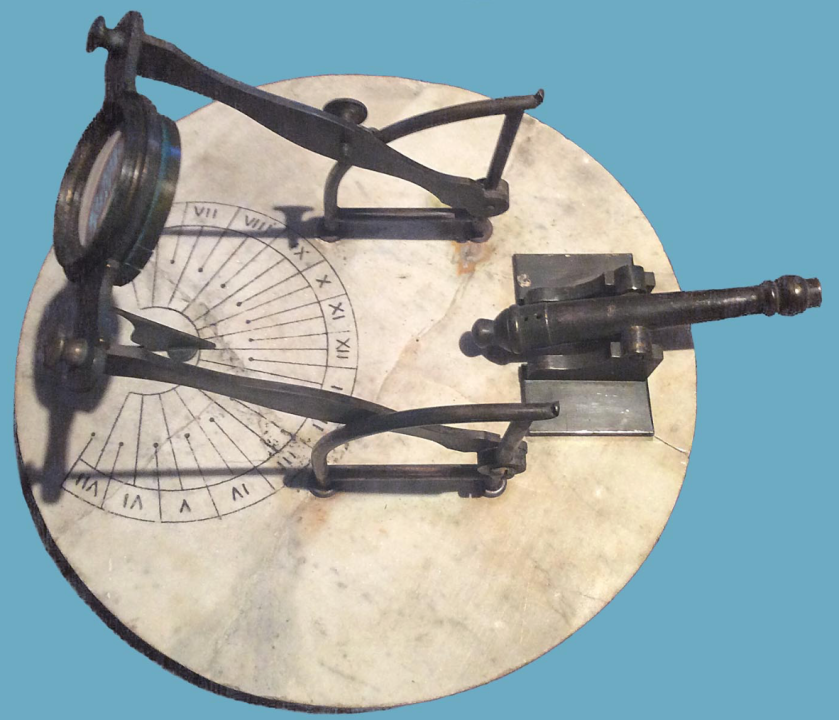
To use this sundial, you align the cannon to a north-south axis and adjust the moveable frame which holds the burning glass according to the season, since the Sun rises to different heights in the sky at different times of year. Once the sundial is thus aligned, the Sun’s rays will fall through the burning glass at noon and get focused onto the fuse of the cannon, lighting it and igniting the gun powder placed in the barrel!
Cannon sundials could be tabletop-sized like ours or more building-sized. At Åtvidaberg in southeast Sweden, you can still see a large 19th-century example from an estate go off every day from May through August.
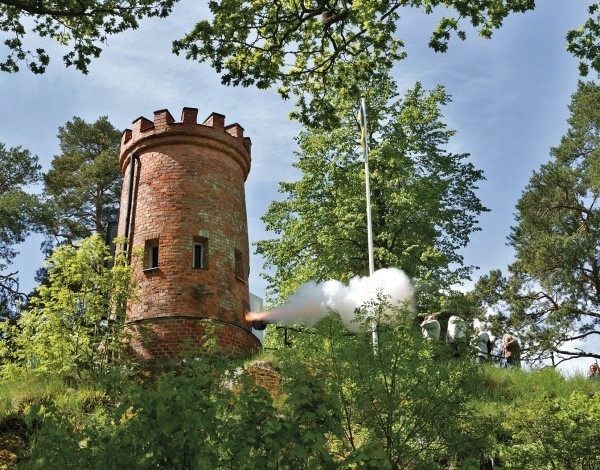
During the 1900s, cannon sundials continued in use to some degree, although one would think it was increasingly more due to antiquarianism and whimsy than practicality. Here is a photograph of one being used on a farm in 1911, from a mocking piece in Popular Mechanics about the suffragist Alva Belmont’s Brookholt School of Agriculture for Women in Long Island.
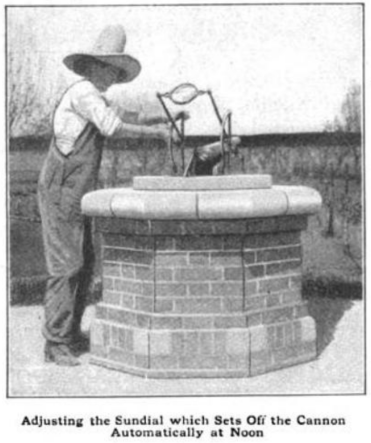
In addition to a number of different European companies having offered fully-finished cannon sundials over the centuries, individuals could also construct their own according to published descriptions, if they could source the necessary materials.
In the 1757 edition of Poor Richard improved, Benjamin Franklin joked about this in order to make a moralistic point. He advised constructing a massive “striking sundial” out of 78 large guns charged with powder and 12 burning glasses. He said that some money could be saved on this enormous undertaking, due to the sundial not being used on cloudy days and due to the cannons’ being sturdy enough to remain in use for a century, before concluding:
“Kind Reader, Methinks I hear thee say, That it is indeed a good Thing to know how the Time passes, but this Kind of Dial, notwithstanding the mentioned Savings, would be very expensive; and the Cost greater than the Advantage. Thou art wise, my Friend, to be so considerate beforehand; some Fools would not have found out so much, till they had made the Dial and try’d it. Let all such learn that many a private and many a publick Project, are like this Striking Dial, great Cost for little Profit.”
By the twentieth century, companies had started producing kits which would allow people to make their own cannon sundials at home for fun. Here is an example which was advertised in Popular Mechanics in 1979, when constructing different types of historical cannons was suggested as a way of celebrating the Fourth of July.
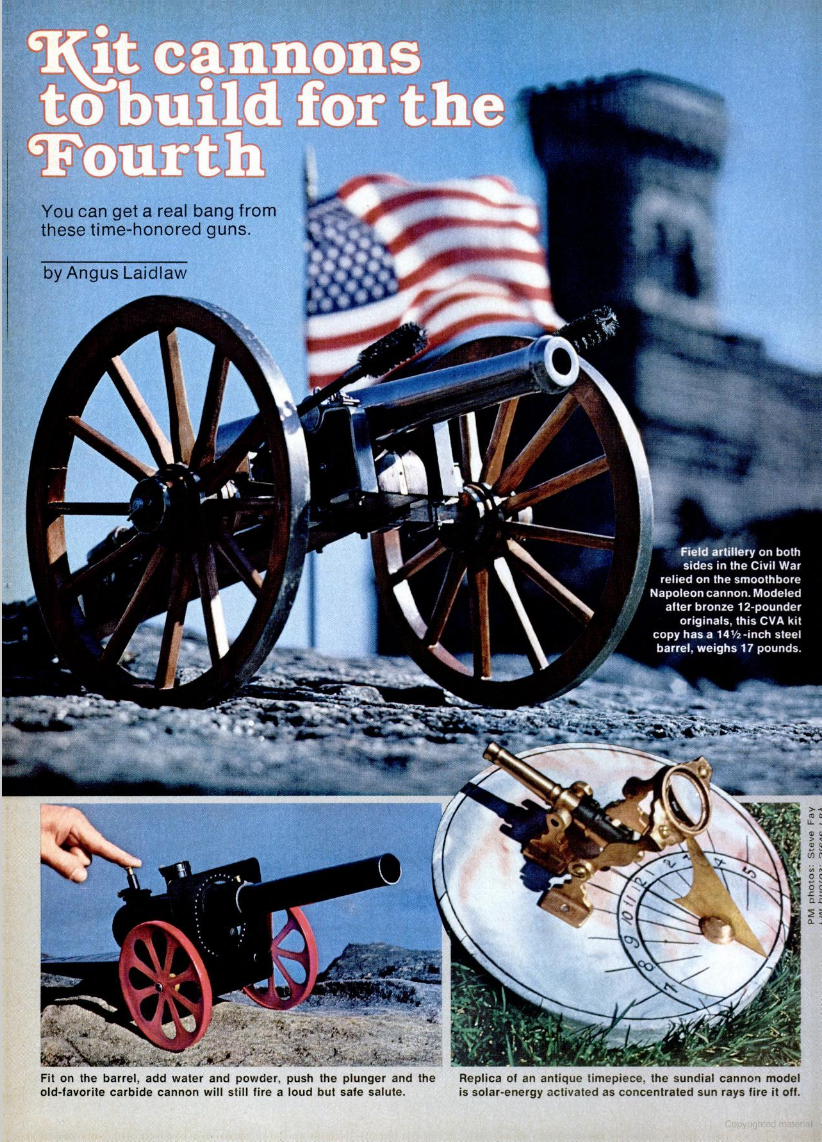
Although historically cannon sundials were useful tools for sharing time over distance, today most of the visitors to our collection seem more intrigued by the Rube Goldberg feel of the instrument – merging a magnifying glass, cannon, and sundial in order to tell the time!
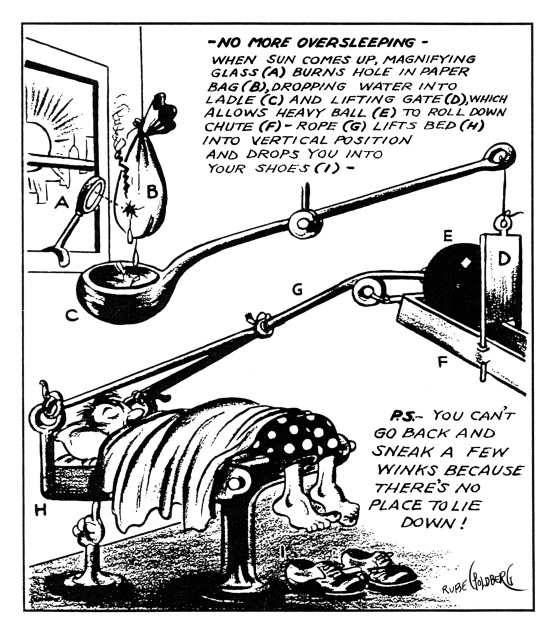

One thought on “Cannon sundials – telling time with a bang”